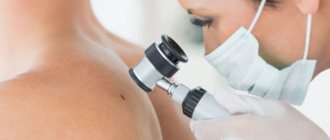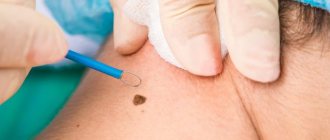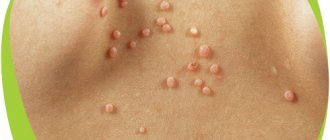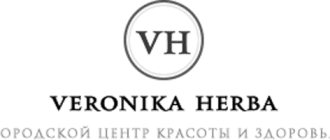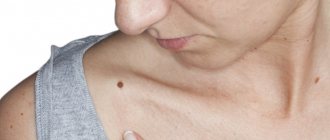Warts are benign growths on the skin caused by the human papillomavirus, which affects 80% of people. The virus appears during decreased immunity, stress, and also after infectious diseases. The only way to treat warts is to remove them using laser, cryodestruction, radio wave surgery, electrocoagulation and other techniques.
Each removal method has its own advantages and disadvantages. In our clinic, to remove warts, we use a modern radio wave device “Surgitron”, which minimally injures the tissue and promotes rapid healing of the wound surface.
What is removal using the radiosurgical method at the Airport metro station?
Removal by radiosurgical method is the non-contact removal of unwanted tumors on the human body by exposure to a “beam” of high-frequency radio waves. A device made in the USA, Surgitron, is often used for this purpose. Interesting fact: In our country, radiosurgery began to be used about 15 years ago, but the method appeared in the 70s of the twentieth century. Initially, he was called upon to solve gynecological problems, then otolaryngological ones, and now he has reached cosmetology. With its help, you can remove not only “good” formations, but also malignant ones. The session time range ranges from 3 to 10 minutes.
Removal of warts using the Surgitron device
"Surgitron" is a device for radio wave surgery. Wart removal is performed by exposure to specific radio waves that cause destruction of the wart without causing burns and tissue damage, which are characteristic of laser technology. Radio waves are emitted through a replaceable electrode, similar to a thin wire. It is selected in accordance with the required depth of exposure. When warts are removed, scars are not formed, muscle spasms are not provoked, and the wound does not become infected.
The essence of the radiosurgical method of removal
The effect of the method is that under the influence of electric current, skin and soft tissue cells heat up, expand, the cellular fluid boils and evaporates. The result is an incision of the required depth with simultaneous disinfection and blood clotting. For this purpose, a fairly thin electrode is used, also called an electric knife, which does not heat up at all during the procedure. Removal by radio wave is a non-contact method, because the instrument itself does not produce a mechanical effect on the dermis. We can say that the use of radiosurgical method for removing tumors leaves virtually no traces.
Types of warts
- Common warts are dome-shaped gray-brown formations with a rough, keratinized surface. Most often (but not always) they form on the hands. Their sizes can reach 1.5 cm. The formations can merge with each other, resulting in the formation of plaques.
- Plantar warts are one of the varieties of common warts. They occur on the soles of the feet and cause discomfort when walking. Externally, plantar warts are thickenings on the skin covered with dark dots. Formations appear in places where the foot comes into contact with the shoe and sweats.
- Flat warts , also called juvenile warts, form on the extremities and face. They are small in size, no more than 5 mm. Most often they have the form of pink or brown nodules. This type of wart most often affects children and adolescents.
- Thread-like - appear on the face in the chin, mouth, and around the lips. Similar formations under the mammary glands and inside the armpits are also common. They most often do not differ in color from the skin. The main danger of filamentous warts is the possibility of injury and spread of the virus, so removal is often required.
- Condylomas acuminata are pink formations in the form of nodules. After some time, they merge and create larger growths on the stem. They occur in the groin and intergluteal cavities.
- Senile warts are a benign proliferation of keratinocyte cells. They appear everywhere except on the soles. This type of wart is the only one whose formation is not associated with HPV.
Areas of use
The scope of application of the method is quite diverse. Its advantages are:
- fairly affordable price;
- minimal probability of relapse (2-3%);
- minimal blood loss (excellent coagulating effect);
- fairly quick recovery after the procedure;
- minimal trauma to the skin surface and mucous membranes;
- minimal likelihood of scarring;
- there is no contact of the device with the skin (the possibility of infection is excluded);
- it is impossible to get burned;
- There is no necrosis of tissue edges.
- no hospitalization required;
- in most cases, anesthesia is not required;
- sterility of the procedure;
- no additional treatment of the treated area with medications is required;
- there are no negative consequences in the form of swelling and pain;
- allowed for use in women who have given birth;
Why remove warts
Sometimes warts can disappear on their own. This is due to the work of the immune system, which coped with the multiplication of the virus and was able to suppress its further development in the body. But in most cases, wart removal is necessary. Many methods have been developed for the treatment of papillomas. Removal of genital warts is mandatory as they can multiply. The virus can gradually infect internal organs, which in some cases leads to infertility and serious illness. Plantar warts often cause pain when wearing tight shoes or walking. In the absence of reproduction, other types of warts do not need to be removed if the growth does not cause cosmetic discomfort or pain.
Removal by radiosurgical method - indications and contraindications
Recommendations: Indications for radiosurgery:
- warts on the sole;
- papillomas;
- Nevi (moles);
- spider veins;
- keratoses;
- vulgar warts;
- Hemangiomas
- Skin basal cell carcinomas
- Ingrown nail
- removal of granulation tissue after surgery;
Attention: Contraindications:
- acute inflammatory processes;
- allergy;
- presence of viral infections;
- feverish condition;
- severe liver and kidney diseases;
- diabetes;
- period of bearing a child;
- herpes
Operating principle
At the end of a special electrode, which acts as a scalpel, “Surgitron” generates a focused “beam” of radio waves with a frequency of 3.8-4.0 MHz. By contacting biological tissues, radio waves transform them into a vapor state through local heating of the liquid contained in living cells.
To put it simply, Surgitron simply “evaporates” a certain area of biological tissue. Bleeding does not occur during such an operation because the resulting steam acts as an instant coagulant and, at the same time, a kind of sterilizer. As a result, the doctor is able to make the most accurate cut without affecting the surrounding tissues and even without directly contacting the patient’s body.
The nature of the effect that Surgitron has depends on the type of electrode used, which affects the shape of the generated radio waves: tissue cutting, coagulation or a combined effect.
Comparison with laser vaporization
Operations performed using the Surgitron device have five main advantages over laser vaporization:
1. Mechanical and thermal trauma to surrounding tissues is reduced by 2-3 times.
2. Subsequent regeneration is reduced to approximately the same extent.
3. It remains possible to send the excised tissue for biopsy.
4. A small list of absolute and relative contraindications.
5. The doctor can control the depth of the incision not only visually, but also through tactile sensations, which is impossible when operating with a laser.
Recommendations for care after removal of skin tumors:
- After the removal procedure, you should try to avoid being in the sun for a long time;
- If there is a change in color at the removal site or any other significant changes occur, you should immediately consult a doctor;
- When exposed to the sun, it is necessary to protect the place of removal from exposure to rays using special means;
- It is necessary to carefully palpate the removal site for the appearance of a compaction, and also visually inspect for any increase;
- Avoid going to the bathhouse, sauna, swimming pool, or solarium in the first days after the procedure;
- After removing moles, the affected area should not be wet for several days;
- Skin treatment should be carried out according to the doctor’s recommendations (treatment with an antiseptic should be done 3 times a day).
Specialists of the Absolut Med clinic
Chvyrova Tatyana Nikolaevna
Chief physician, director of the Clinic, participant in Russian and international scientific conferences for cosmetologists, dermatologists, allergists. Read more…
Dermatologist, cosmetologist
Deryugina Elena Yurievna
In 1987
Graduated from Vladivostok State Medical Institute. Experience in medicine for more than 29 years. She worked as a dermatologist for 10 years. In aesthetic medicine since 2000. Read more…
Dermatologist, cosmetologist. Doctor of the highest category
Surgery and rehabilitation period
The radio wave procedure usually lasts 15-20 minutes.
- The patient undergoes a preliminary examination, during which the doctor determines whether there are contraindications to the procedure and possible allergic reactions, and also during which the doctor warns about behavior during the rehabilitation period.
- The affected area is treated with an antiseptic solution (if necessary, local anesthesia)
- The doctor sets the required power and selects the desired electrode on the Surgitron device.
- The process of cauterizing the formation with a radio knife begins.
- The operating area is again treated with an antiseptic, after which, if necessary, a gauze bandage is applied.
During the rehabilitation period, treatment with special ointments and preparations that accelerate healing is recommended. Exposure to water and direct sunlight should also be avoided; thermal procedures (saunas, baths) should also be postponed until complete healing. It is strictly forbidden to remove the resulting crust, as this can serve as an obstacle to regeneration, and even cause the formation of a scar or scar. The complete recovery process takes up to two weeks.
Where papillomas can be removed and the price of this operation are the two questions that most often concern those patients who are faced with this problem. Come to our medical center and we will help you get rid of them!
When to use
With the help of Surgitron, the following types of surgical operations are performed:
- biopsy and conization of the cervix;
- treatment of cervical erosions and cysts;
- removal of external and/or internal hemorrhoids, including thrombosed ones;
- excision of an acute or calloused anal fissure;
- treatment of onychocryptosis (ingrown toenail) and felon (inflammation of the tissues of the fingers or toes);
- removal of anal and genital polyps, genital warts and anogenital warts (molluscum contagiosum);
- removal of warts, nevi, birthmarks;
- some types of intimate plastic surgery;
- sometimes - artificial defloration.
- malignant neoplasms;
- suspicion of malignancy (before biopsy);
- inflammatory and infectious diseases in the acute phase;
- blood clotting disorders;
- diabetes;
- epilepsy;
- presence of a pacemaker;
- in women - pregnancy and the beginning of the menstrual cycle.
Also, with the help of Surgitron, you can successfully remove tattoos, regardless of how long ago they were applied.
Contraindications
The final decision on the possibility of performing a surgical operation using Surgitron is always made by the attending physician.
Is it possible to remove warts without pain and scars?
Modern medicine allows you to remove warts without any difficulties. Today, traumatic methods are no longer used, which leave scars that are even more unaesthetic than the tumor itself. We are talking about burning with acid, leading to the appearance of rough scars.
As medicine developed, more gentle methods for removing warts appeared: electrocoagulation and cryotherapy (cauterization with nitrogen). But they also have their drawbacks. First of all, it is an ulcer that remains after cauterization and is significantly larger in size than a wart.
All of these methods are characterized by prolonged healing with the formation of a scar or a focus of pigmentation. Removing warts using the radio wave method using the Surgitron apparatus does not have such disadvantages. It is one of the fastest, painless and safest, due to the lack of thermal effects on tissue.
Photos before and after radio wave removal of papillomas
Papillomas on the neck
Papillomas in the armpit
Papillomas on the neck
Removal of papillomas (and moles) on the eyelids is carried out with a protective eye shield
HOW TO MAKE AN APPOINTMENT at the PsorMak Institute for Healthy Skin
1. Click the button you see below -
Make an appointment
2. Fill in the fields in the form that appears. Be sure to check the correct phone number so that our specialist can reach you. After filling out, click on the “Submit” button.
3. Wait for our specialist to call. He will answer any of your questions and agree on the date and time of your visit to PsorMak.
The initial appointment includes:
- Visual examination , which will allow the specialist to get a general understanding of the condition of your skin and the pathology itself.
- Collecting anamnesis - finding out information about the development of the disease, living conditions, previous diseases, operations, injuries, chronic pathologies, allergic reactions, heredity, etc. Together with a general examination, this allows you to make a fairly accurate diagnosis and choose a method of treatment and/or prevention.
Make an initial appointment
Causes
The main reason is HPV, which stands for human papillomavirus. It can be contracted through household and sexual contact. Transmission also occurs when a child passes through the mother's birth canal during childbirth. The smallest damage to the skin is enough for penetration.
HPV is a highly contagious virus. It is almost impossible not to become infected with it throughout your life. According to statistics, 8 out of 10 people encounter the virus, but fewer people develop papillomas. Provoking factors include:
- hypothermia or overheating;
- stress;
- infectious processes in the body;
- hormonal changes;
- bad habits;
- poor nutrition;
- pregnancy.
Advantages of radio wave surgery:
- The procedure for removing moles is practically painless and does not require hospitalization; it is carried out on the day of treatment;
- No keloid scars form at the site of the removed nevus; there is no need to apply stitches or bandages;
- During radio wave exposure, small vessels are sealed - minimal risk of bleeding and infection;
- Low-traumatic method, convenient for the patient and the doctor.
- Does not require testing;
- Fast tissue healing process;
- Impeccable cosmetic effect.
These advantages make radio wave surgery a leading position in the field of minor surgical interventions.
Summary:
As an oncologist, I recommend removing skin lesions only using radio wave surgery. The method allows you to examine all distant formations and minimizes the risk of developing skin cancer and melanoma.
Sign up for radio wave mole removal


